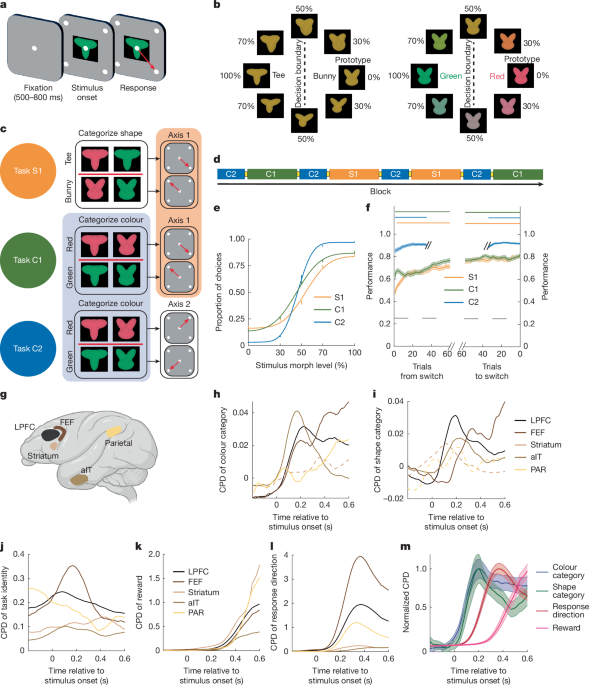
"Two adult male rhesus macaques ( Macaca mulatta) participated in the experiment. The number of monkeys (2) follows previous work using similar approaches. Monkeys Si and Ch were between 8 and 11 years old and weighed approximately 12.7 and 10.7 kg, respectively. All of the experimental procedures were approved by the Princeton University Institutional Animal Care and Use Committee (protocol, 3055) and were in accordance with the policies and procedures of the National Institutes of Health."
"Each trial began with the monkeys fixating on a dot at the centre of the screen. During a fixation period lasting 500 ms-800 ms, the monkeys were required to keep their gaze within a circle with a radius of 3.25 degrees of visual angle around the fixation dot. After the fixation period, the stimulus and all four response locations were simultaneously displayed."
Two adult male rhesus macaques (Si and Ch), aged 8–11 years and weighing about 12.7 and 10.7 kg, participated under approved institutional protocols. Each trial required central fixation for 500–800 ms with gaze constrained within a 3.25° radius before simultaneous presentation of a stimulus and four response locations. Stimuli were three-dimensional morphs combining colour and shape, rendered with POV-Ray and MATLAB and displayed using Psychtoolbox on a monitor 58 cm from the animals. Colour and shape morphed along circular continua drawn from a four-dimensional Clifford torus. Colour sampling used a photometrically isoluminant CIELAB circle; shape interpolation transitioned between 'bunny' and 'tee' prototypes. A mathematical constraint X1^2+X2^2+X3^2=P^2 defined morph parameterization, with radius P chosen for sufficient visual discriminability.
Read at Nature
Unable to calculate read time
Collection
[
|
...
]